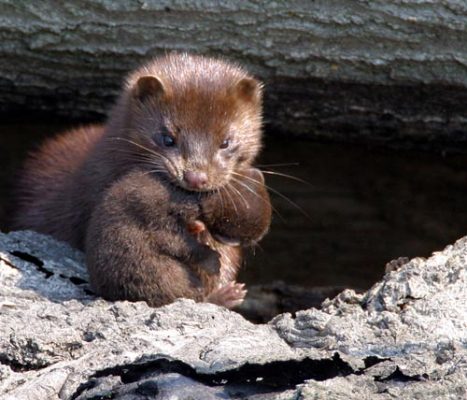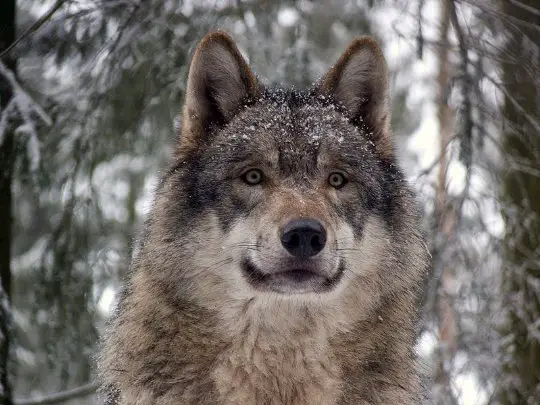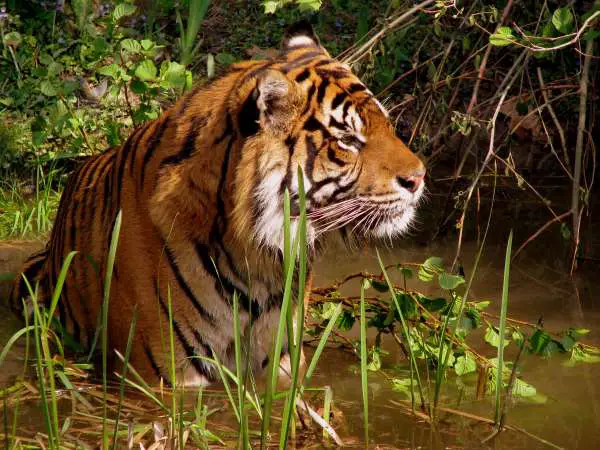The American mink (Neovison vison) is a North American mustelid that occurs in different parts of South America and Europe. Humans have long hunted minks precisely due to its attractive fur. The American mink mainly eats crustaceans, rodents, fish, birds, and frogs in the wild. It is likely to be distinguished from weasels and stoats in the physical appearance.
American Mink Facts
Anatomy
- American minks have got long bushy tail which is almost half the length of its body.
- The mink typically shows slender body and this body helps the animal to get into the burrows of prey.
- It has blackish-tawny fur which is extremely soft and dense and the hair becomes denser on the back as compared to the lower sides.
- They can swim for hours with less effort. The mink’s body is so built that it offers little or no resistance to water.
- Minks have wide feet and webbed claws.
- Adult minks grow up to 13–18 in (34–45 cm) in body length while females are 12–15 in (31–37.5 cm) long.
- Males have got 6–10 inches (15.6–24.7 cm) long bushy tail and females possess tail that averages 6–8 in (14.8–21.5 cm).
- Adult males average 1–3 lb (500–1,580 g) in weight while females weigh 1–2 lb (400–780 g). They gain more weight in spring.
- The mink has an excellent sight and thus the animal relies on it when foraging.

Geographic Range
- American minks are thought to occur in North America including Canada and Alaska. It is absent from Arizona. The mink’s range includes Utah, West Texas, Nevada, New Mexico, and California.
Behavior & Habitat
- American minks are able to run as fast as 6.5 km/h (4.0 mph). Along with swimming it can also climb up the trees. During swimming minks are thought to conserve energy.
- Minks are nocturnal animals but they remain active during daylight hours. They are likely to travel 12 kilometers in one night. During the mating season males or young minks move as much as 45 km.
- American minks cannot swim in cold water for more than 27 minutes. If the water is warm up to the temperature of 24o C it may swim for as long as 180 minutes continuously.
- The mink typically dives to a depth of about 12 in (30 cm) and the duration is about 10 seconds. The maximum depth achieved by these animals is 3 meters with the duration of one minute.
- Usually it catches a fish within 15 – 20 seconds after giving a chase.
- Minks are likely to see clearer on land than underwater. They have got acute hearing sense due to which they are able to detect sounds ranging from 1 to 16 kHz from rodents.
- American minks have poor smelling sense.
- They mostly occupy territories that offer rocky coastal habitats and thick cover.
- Home range of minks is about 1–6 km (0.62–3.73 miles). The territories of female are smaller than those held by males.
- Minks may also dig burrows which measure 4 inches in diameter and the length averaging 10–12 feet (300–370 cm). The depth of burrows is about 2–3 feet (61–91 cm).
- American minks make dens close to the water. They build long burrows under logs, roots, river banks, and in tree stumps. Sometimes dens are also located in crevices or holes. Chances are that they may use nests of other animals including muskrats, skunks, and badgers.
- Minks make homes in reed open marshes, sedges, black alder swamps and in non-swampy forests.
- There is a chamber at the end of the burrow and the chamber measures one foot in diameter.
- They only utter sounds when they get into conflict with other minks or when they are threatened. American minks produce sounds such as hissing or shrieking.
- Minks do not hibernate rather they become less active during winter.

Feeding Ecology & Diet
- American minks typically eat crustaceans, birds, rodents, amphibians, and fish. They may also kill larger animals including cormorants and seagulls. Prominent among its natural prey is fish.
- The mink’s diet also consists of tadpoles, mice, squirrels, common muskrats, shrews, moles, voles, frogs, and aquatic insects.
- American minks never stalk their prey in fact they rush after the prey and hold it firmly.
- It is a potential predator of muskrats. The mink chases and kill muskrats even in their own burrows. The American mink is thought to feed on dippers, wide-headed sculpins, pine grosbeaks, and gudgeons.
- In the Russian Far East, minks rely on amphipods. The British population consumes rock-pool fish, shore crabs, ducks, coots, moorhens, blenny, crayfish, and water voles.
- European eels and European hares are also consumed.
Reproductive Biology
- The mating season ranges from February to April.
- The gestation period lasts about 40–75 days. A female gives birth to 11 kits in April or June.
- The kits are born blind and weigh 6 grams. They will open their eyes when they are 25 days old.
- The weaning period is about 35 days. They become fully independent after 56 days.
- American minks reach the maturity age when they are 10 months of age.
Conservation Status
Least Concern





